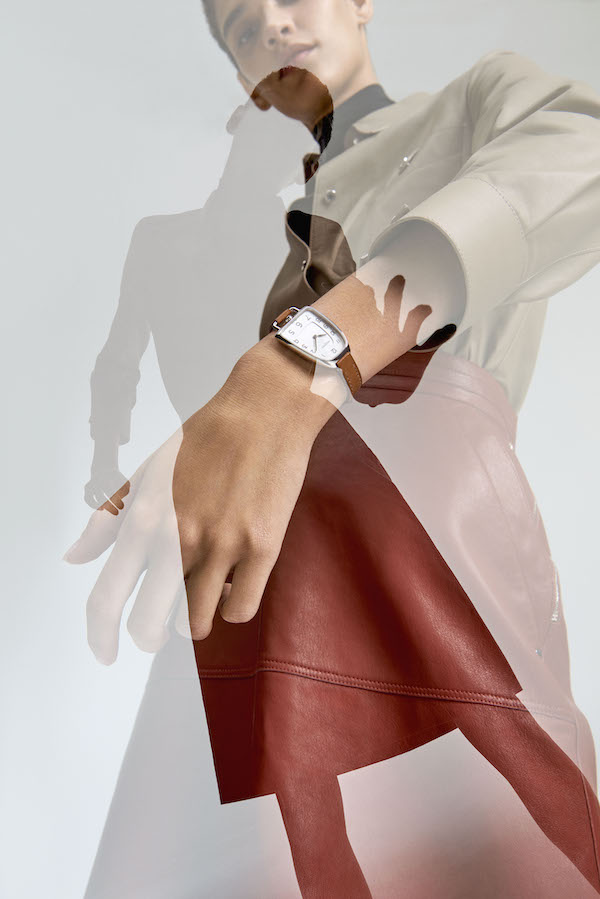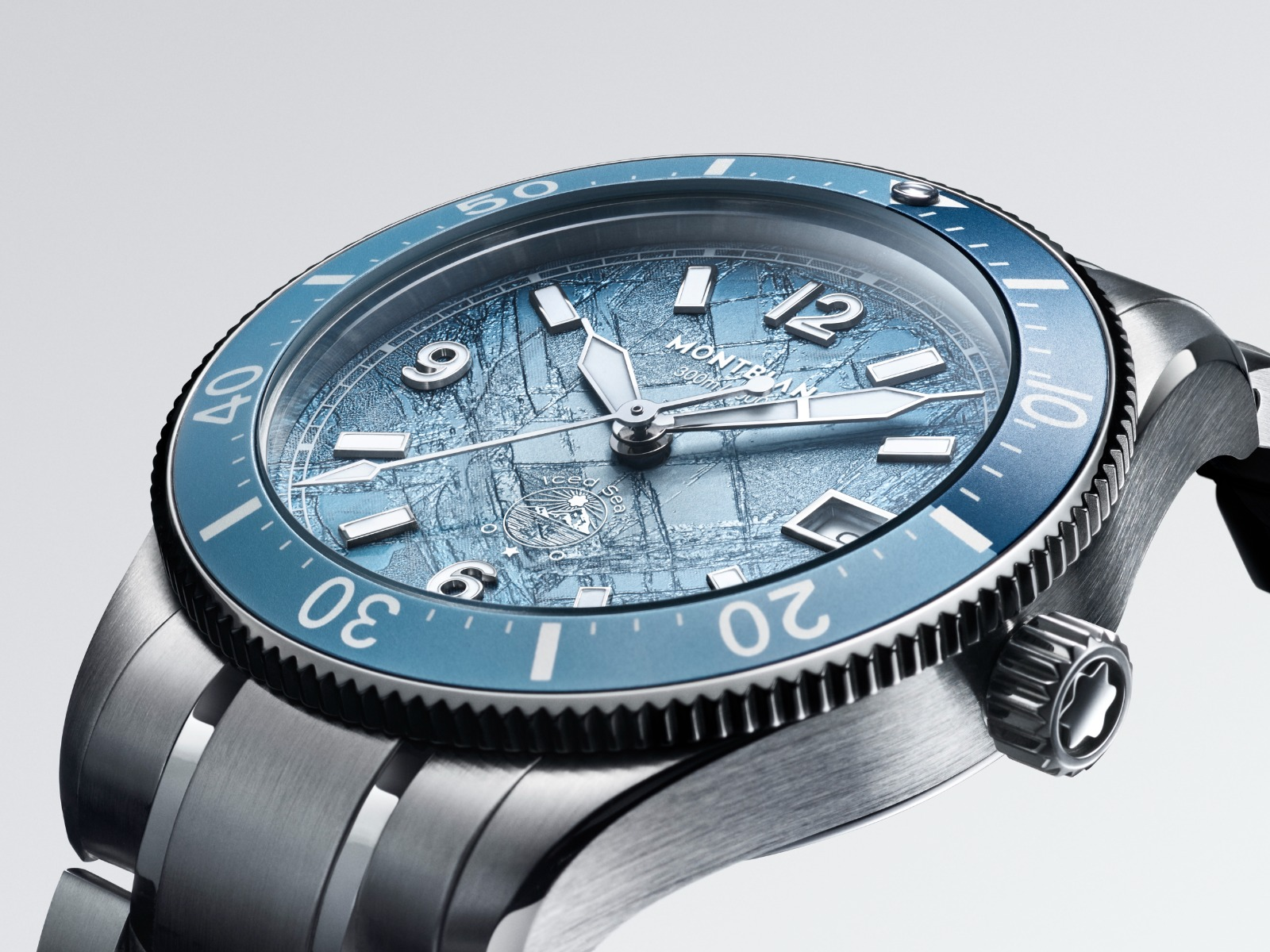In conversation with Philippe Delhotal, Creation and Style Director of Hermès Horloger
May 06, 2019

At this year SIHH’s we had the pleasure to catch up with Philippe Delhotal, the man behind Hermès Horloger. Exposing for the second time at the prestigious international fair, the iconic French maison has officially entered the elite group of the world’s great watch manufacturers.
We talked to Delhotal about his background, his vision and his career at Hermès.
What made you realise you wanted to study and work with watches specifically? How did it all begin?
I have always loved beautiful objects, beautiful things. My passion for drawing started in my youth. I asked myself “how could I find a profession with my drawing?”. I started my studies of micro-technical watchmaking in France, then I told myself why not go to watchmaking as it’s at the same time technical and aesthetic. Therefore, following my technical studies in France and I continued my artistic pursuit in a fine art school. It allowed me to have this training, putting together at the same time ‘technical’ and ‘aesthetic’. I asked myself what object could unite two things together: either in automobile or watchmaking. This sensibility I gained has let me later develop this career in this professional category, which now I love very much.
What does a timepiece mean to you and what do you want others to think of this art form?
First, it is an object. It can be a piece of jewellery. It is something that gives you a lot of emotions, emotions given by the people who worked on it, by the craftsmen who created it. Wearing a watch is all about wearing a world of ‘savoir-faire’ (skills), which are very important in the communication of an object.
I always touch my watch and it’s something that I love doing. It is a companion of life. I want the people who wear these watches or who begin to wear these watches to understand how they were made and how they were imagined. It’s not simply something inert but it’s an object with a life. There is movement. There is reading of hours and seconds. It’s something that animates and will continue to exist despite some competition with smart watches. I think mechanical watches will still exist as they have this emotion, which can’t be found elsewhere.
Could you please describe your creative process and the most important step in your opinion?
The process is quite simple. It’s not something revolutionary. We cannot do something unexpected. I think the most important thing in the creation of a watch is exactly the idea. It’s the idea which allows you in certain moment to pursue the next. Once we have the idea, we start to draw on paper or to discuss or to do it in a computer. There are several possibilities. I think the only important thing is the story to relate with the object. With this object you will know a story. It can’t be an object without story. In any case, it is not with Hermès. Therefore, this creative process, which is very important, can allow us to make the most possibly achieved object. As we had meetings to create this watch ‘Galop d’Hermès’, there were creative processes. There were certainly different ways to continue. It’s exactly in this reflection and in this imagination that we came to create these pieces.

You used to work with some of the most prestigious luxury watchmakers in the industry including Piaget and Jaeger-LeCoultre, how does working at Hermès differ from your past work experiences?
In my past experiences I have worked for the big manufacturers. I was in a purely mechanical world of a very high level. When I joined to work for Hermès, it started to change everything. Hermès is a house of creation with a group of métiers (know-how). With all these métiers, they automatically made me think and reflect on a very different creation process, which is very different from the past. I opened my eyes in the house of Hermès of this creativity or multi-craft. It serves a lot in the watchmaking of Hermès.
How do you think a Hermès watch is different from what’s out there? What makes a watch Hermès?
What makes the difference between Hermès and the others is that simple objects are made dynamic, as seen in the case – the typography, the asymmetry of straps and fixation of the case. It’s simple by its excellence. When we look at the watches Galop d’ Hermès and Arceau L’heure de la lune, they are simple with a real personality, with a real presence. I think that makes us different with other brands.
What inspired your decisions on the designs, shapes and finishes for these exquisite watches?
When we create a watch, we have the design followed by all the process of production and modeling. For example, a dial on a drawing will never be the same as the final one. There are trials and ideas which come along and in a given moment the original design is not necessarily the same at the end.
The biggest satisfaction is when we assemble the components and we see how the watch is constructed: the choice that we have made, the choice of aesthetic, the choice of finish and the choice of completion.
Did you encounter any technical difficulties while creating these pieces?
In all the watches that we made, there were always technical difficulties, the technical difficulties that we hadn’t imagined at the beginning. We discovered them on the way of the collaboration of the project. It’s actually the interesting part of the project, the more we wanted the project to be perfect, to be very different and to have a character with a lot of details, the more technical difficulties will come along. It’s also part of the process, not necessarily the creation, but then it’s the conception of the product.

Tell us more about Hermès at this year’s SIHH.
The presence of Hermès in this fair is firstly a great satisfaction. It’s the second year that we come. It’s a proof that we have a place in SIHH among the great manufacturer. This year is particularly rich as we have two very important products, one for women and one for men, with a complication. I think now we have succeeded among all the great watchmakers, not by luck, as we have worked for many years on quality, on originality, on creativity. Now we’re in an atmosphere that fits us very well.
With the dial being such a small surface, is it possible to adapt all the Hermès métiers in one dial?
Not all the métiers, because it is already a lot of crafts. However, we use some of them, for example the use of crystal, the dial of leather which belongs to the craft of Hermès. We cannot put all the craft on the dial. Not all the craft could be transferred on a dial.
What do you see in the future for timepieces? Do you think the technology of smart watches is going to overshadow the craftsmanship of traditional watches?
I tend to see the future positively. I see the work and all the brands that we see here in SIHH. We perceive creativity as a very important element. The people are conscious that at the end, survival of this profession and of watchmaking depends on creativity and innovation. Speaking of smart watches, I don’t worry a lot. Firstly, it’s an object which is part of today. It’s a product that we should live with. For me, sometimes I wear it for sports, but I always wear my mechanical watches for work, for parties. They are two very different products. They are complementary. I don’t see there is no rivalry, there shouldn’t be any fight as it is more like an instrument than a watch. That’s why I’m quite at ease to talk about this. We see that today. We had this big threat before. With creativity and innovation of the big watchmakers, we could always survive.
What’s next for you?
The next step is not complicated. It’s to share with you the new products that we can talk about and can give you emotions and this is my pleasure. It’s to create a product and to see the people in this fair to be happy. This is the real satisfaction.
You imagine that you wake up and you see people in this fair and they are happy. It is the most beautiful gift. It’s the most beautiful satisfaction for the people passionate with their work.





























